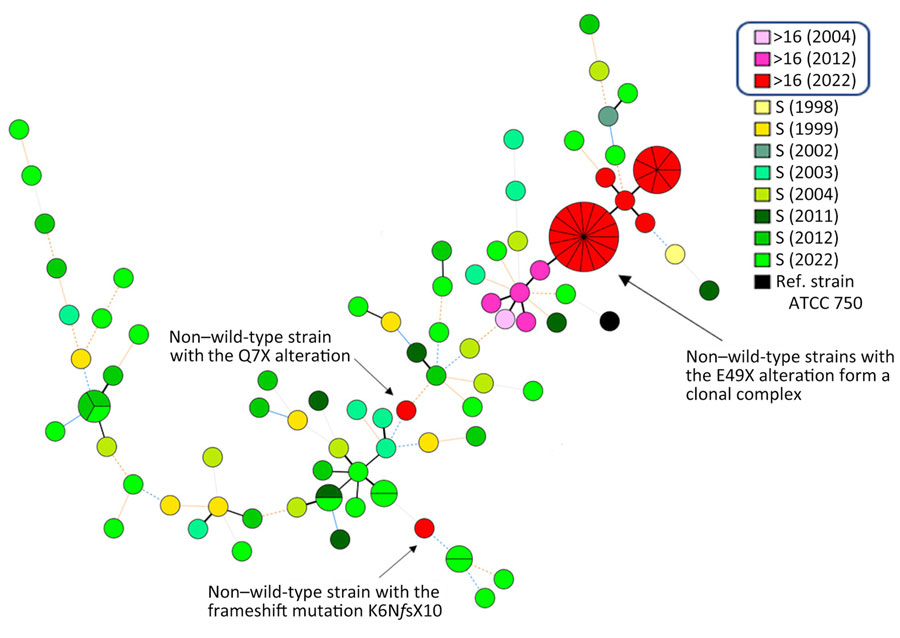Volume 31, Number 5—May 2025
Research
Exponential Clonal Expansion of 5-Fluorocytosine–Resistant Candida tropicalis and New Insights into Underlying Molecular Mechanisms
Figure 1

Figure 1. Minimum spanning tree illustrating the genotypic relationships among Candida tropicalis isolates, Denmark. Each node represents a distinct genotype; node size is proportional to the number of strains sharing the same allelic profile. Lines connecting nodes indicate genetic differences: thick solid black indicates 1 allele difference; thin solid black, 2 alleles; thin solid blue, 3 alleles; thin dashed blue, 4 alleles; orange dashed, 5 alleles; orange dotted, 6 alleles; and grey dotted, >6 alleles. Node colors represent the year of collection and 5-fluorocytosine resistance status. Non–wild-type strains with the E49X alteration form a clonal complex with minimal genetic variation over a 20-year period. In contrast, isolates carrying the Q7X or K6NfsX10 alterations are genetically unrelated to each other and to other strains, suggesting sporadic acquisition of resistance. Note: Line length does not reflect evolutionary distance. Boxed items at top of key indicate MICs for non–wild-type strains. S, susceptible.